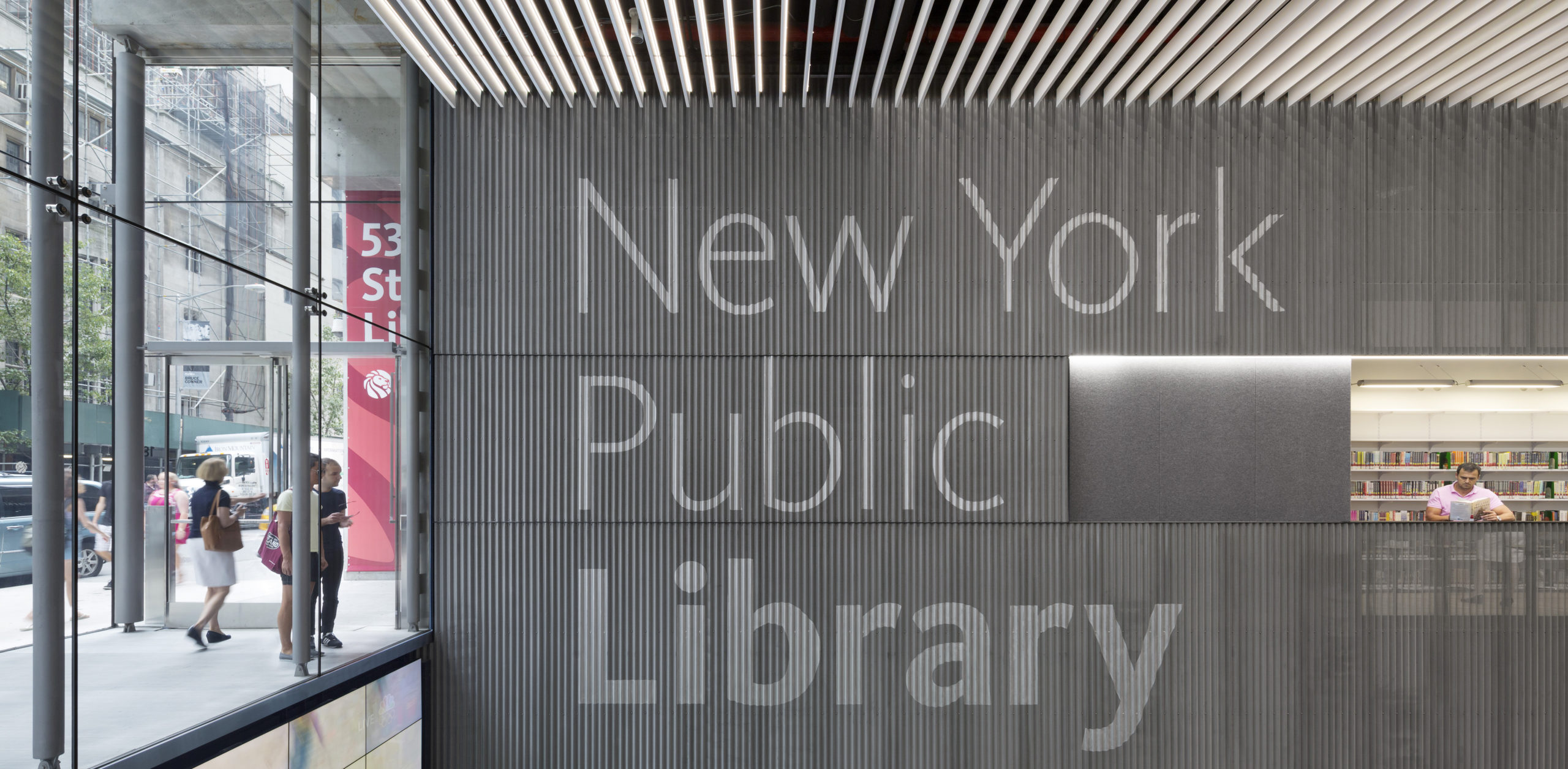Porosity From Above – This project is a major alteration of an existing “Ruko”, which is a typical mix-use row house building commonly found in Jakarta, Indonesia. The site is 4 m wide and 15 m deep. A common typology for this type of structure is that it shares two common walls with its neighbors, which often poses a design challenge in finding sufficient access to natural light and ventilation. In response to this issue, we punctured holes on the roof of the stairwell bulkhead and on the 3rd floor slab to provide healthy and playful work lifestyle for a small tech startup office.
Architizer chatted with Kelvin Thengono from K-Thengono Design Studio to learn more about this project.
Architizer: What inspired the initial concept for your design?
Kelvin Thengono: The inspiration came by understanding the existing building constraints and limitations, and develop innovative solutions to meet the desired results.

© K-Thengono Design Studio
What do you believe is the most unique or ‘standout’ component of the project?
We love the playfulness components of the project. From the natural sunlight reflection to some of the curvilinear form that we brought to the design.
What was the greatest design challenge you faced during the project, and how did you navigate it?
It was to change the typical perspective of “Ruko”, which often poses a design challenge in finding sufficient access to natural light and ventilation.
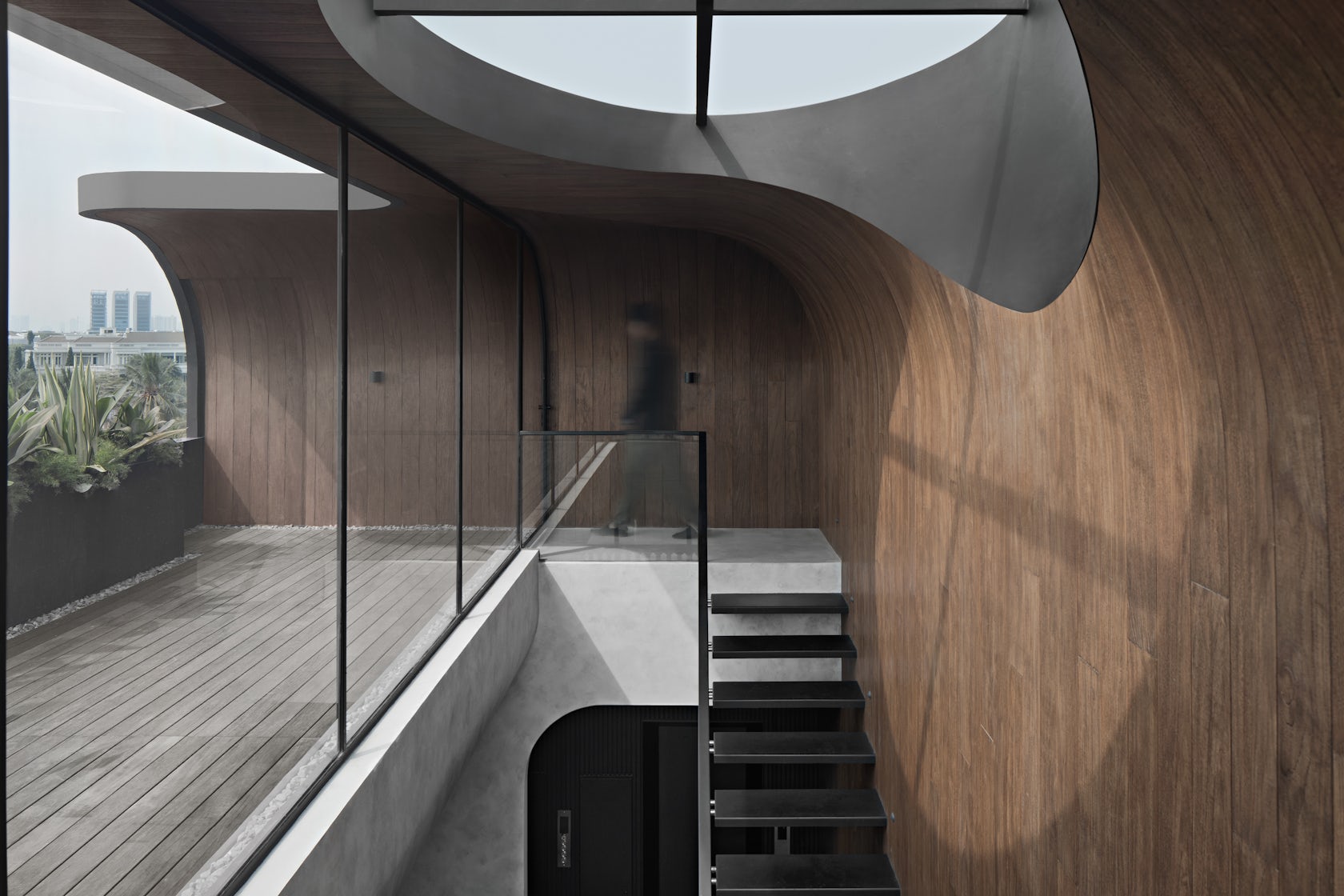
© K-Thengono Design Studio
How did the context of your project — environmental, social or cultural — influence your design?
The context was essential to the project. We would have not thought about having the porosity from above if the site was not as narrow and dark to be used as a workspace. The fact that the building is situated in a tropical climate, passive lighting and cooling are used to help enhance the quality of space, leaving the tenant to not turn on any artificial lighting during the day. Genuine stack and cross ventilation help to cool off the humidity. Together they fester a healthier work environment.
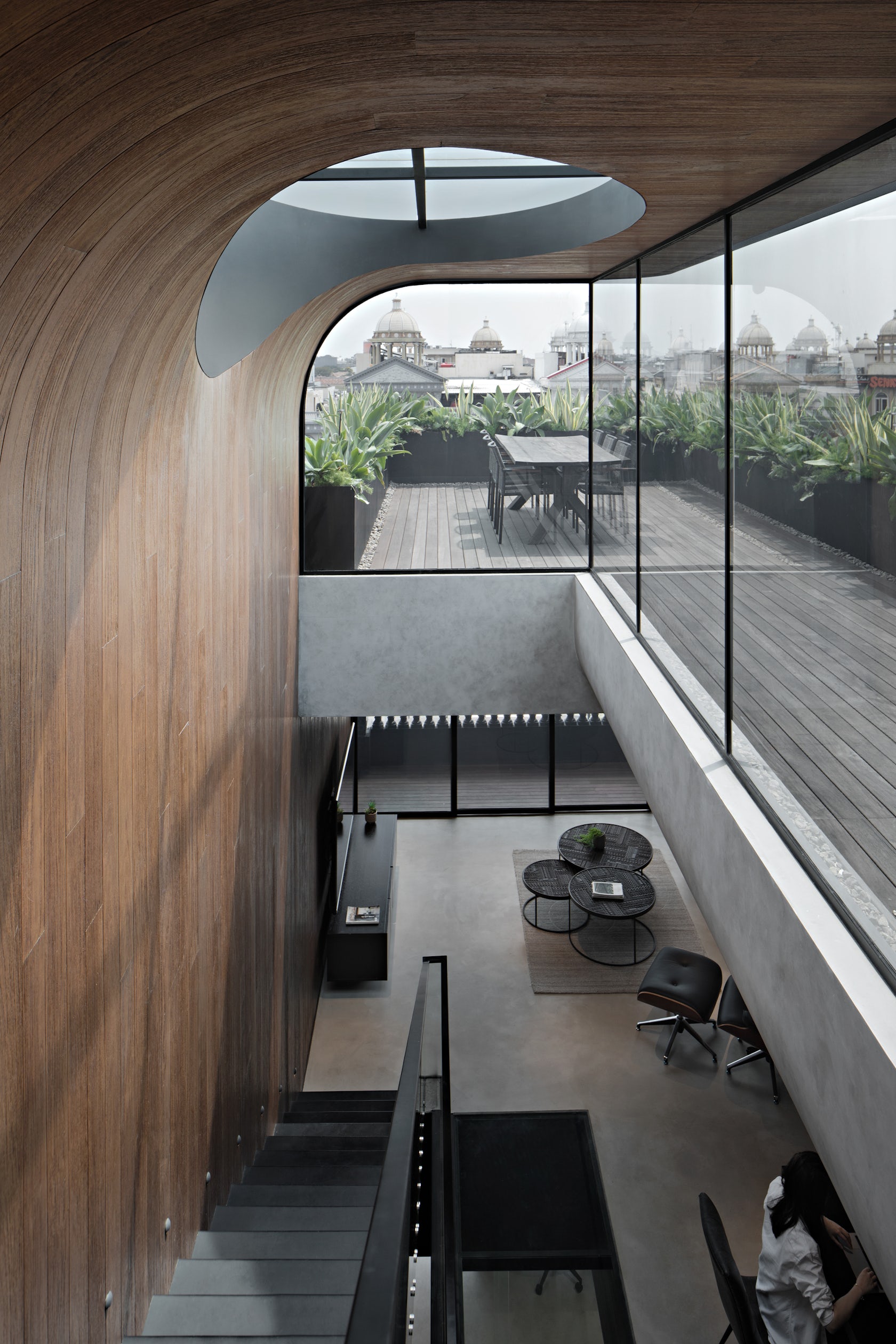
© K-Thengono Design Studio
What drove the selection of materials used in the project?
Material is used as a reflection of its context. Using natural material that age nicely. Local material could be sourced pretty easily.
What is your favorite detail in the project and why?
We particularly love the oval-shaped skylight. It creates a supple shape that reflects playful daylight into the interior.

© K-Thengono Design Studio
How important was sustainability as a design criteria as you worked on this project?
Sustainability was essential. It could be achieved by the design process as means to conserve energy and utilize the inherent natural aspects.
In what ways did you collaborate with others, and how did that add value to the project?
Effective and efficient communication was the key to be able to achieve a successful project. There were different consultants such as MEP, Structural, Lighting, Landscape, apart from the general contractor to ensure the precision during the construction. We employed internal and external meetings to ensure our work reflects valid information.
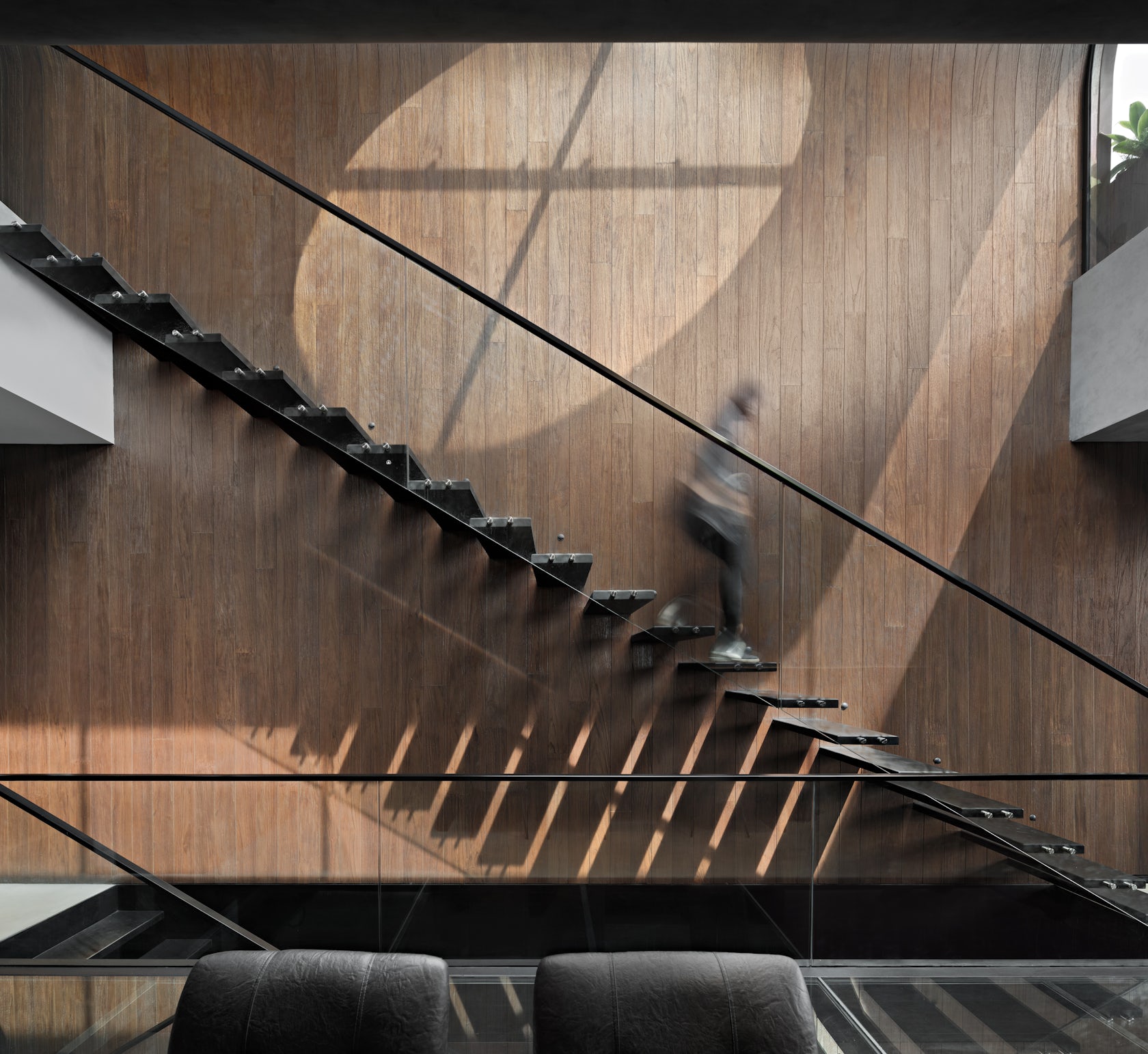
© K-Thengono Design Studio
Were any parts of the project dramatically altered from conception to construction, and if so, why?
We were fortunate to have the built building looks exactly the same as what we had expected. May be because the building area is relatively smaller, so we could pay attention better to its detail during the construction.

© K-Thengono Design Studio
How have your clients responded to the finished project?
The clients are very happy and excited to move in right away. Luckily, we were fortunate enough to get the permission to have it professionally photographed right after the construction was finished.
What key lesson did you learn in the process of conceiving the project?
The key is a good communication during the design process and construction. Enjoy the process!
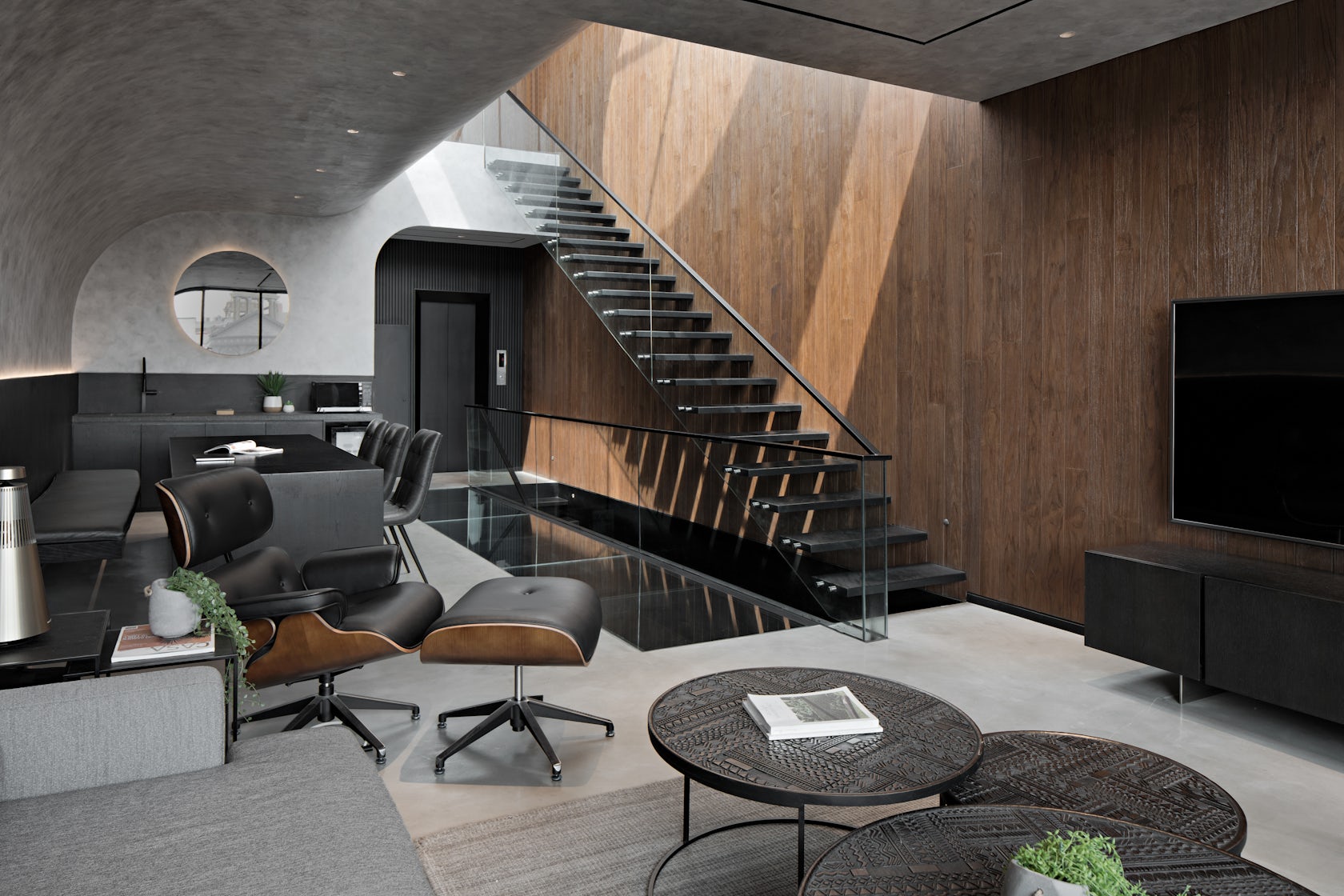
© K-Thengono Design Studio
How do you believe this project represents you or your firm as a whole?
Our firm seeks to build holistic spatial environment that responds to a specific site context with consideration of culture, climatic condition, context, and current issues. We love to promote local material and maintain its naturally to every projects.
How do you imagine this project influencing your work in the future?
I hope that our design practice will always push the boundary of architecture to beyond its limit. We shall maintain the curiosity of pushing the envelope further. It would also be nice to keep incorporating nature to the buildings.
For more on Porosity From Above, please visit the in-depth project page on Architizer.






 Porosity From Above
Porosity From Above 
